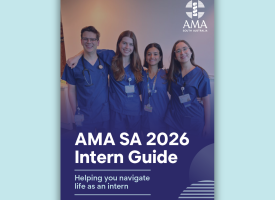Flexibility is key to growing the medical workforce
Doctors and medical students need access to flexible working and training arrangements to support and grow the medical workforce, and improve diversity and equal opportunity in the sector.

The Australian Medical Association has updated its position statement on flexibility in work and training practices, reflecting the evolving needs of Australia’s medical workforce and the shift in societal attitudes for greater flexibility in workplaces and training environments.
The position statement outlines initiatives that will help medical training providers and employers support doctors to take up flexible work.
AMA President Professor Steve Robson said lifestyle and flexible working practices were among the most important factors for doctors when deciding on specialty careers.
“Most training programs in Australia provide opportunities for trainees to complete their training in a flexible manner, but unfortunately there’s evidence that shows trainees find it hard to request flexible training and work due to structural and cultural issues,” Professor Robson said.
“The burden is often placed on the trainees to negotiate their own terms of flexibility and support, resulting in poor uptake of flexible training.
“Flexible training and flexible working environments promote equal opportunity and diversity, while enhancing the overall participation of doctors in the workforce and support high quality patient care.”
Professor Robson also noted research from the Diversity Council Australia highlighted the role flexible working arrangements can play to help close the gender pay gap by enabling greater workforce participation for those with caring responsibilities.
“Access to flexible work is important for both men and women who want to be able to share the parenting load. Caring duties disproportionately fall to women, and men find they are discriminated against when asking for access to flexible work,” Professor Robson said.
The AMA’s updated position statement provides practical suggestions to improve access to flexible work and training, including flexible full time, job-share and part-time positions.
Other suggestions include removing caps on interrupted training due to parental and carer’s leave and support for doctors with disability to arrange bespoke flexible training and work arrangements.
The AMA is also urging trainees to take part in this year’s Medical Training Survey, which is asking questions about flexible work and training arrangements for the first time.
Dr Hannah Szewczyk, chair of the AMA’s Council of Doctors in Training, said the survey gives trainees the opportunity to share their unique insights and will generate data that will ultimately improve the quality of medical education and training in Australia.



